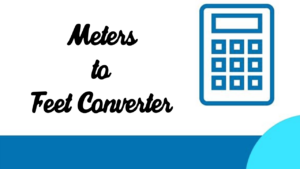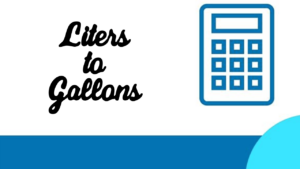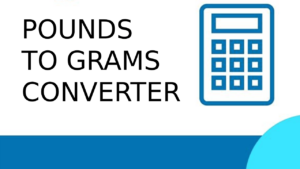An easy method of converting decimal to binary number equivalents is to write down the decimal number and continually divide by 2 (two) to give a result and a remainder of either a “1” or a “0” until the final result equals zero.
| Decimal | Binary |
|---|---|
| 1 | 1 |
| 2 | 10 |
| 3 | 11 |
| 4 | 100 |
| 5 | 101 |
| 6 | 110 |
| 7 | 111 |
| 8 | 1000 |
| 9 | 1001 |
| 10 | 1010 |
| 11 | 1011 |
| 12 | 1100 |
| 13 | 1101 |
| 14 | 1110 |
| 15 | 1111 |
| 16 | 10000 |
| 17 | 10001 |
| 18 | 10010 |
| 19 | 10011 |
| 20 | 10100 |
| 21 | 10101 |
| 22 | 10110 |
| 23 | 10111 |
| 24 | 11000 |
| 25 | 11001 |
| 26 | 11010 |
| 27 | 11011 |
| 28 | 11100 |
| 29 | 11101 |
| 30 | 11110 |
| 31 | 11111 |
| 32 | 100000 |
| 33 | 100001 |
| 34 | 100010 |
| 35 | 100011 |
| 36 | 100100 |
| 37 | 100101 |
| 38 | 100110 |
| 39 | 100111 |
| 40 | 101000 |
| 41 | 101001 |
| 42 | 101010 |
| 43 | 101011 |
| 44 | 101100 |
| 45 | 101101 |
| 46 | 101110 |
| 47 | 101111 |
| 48 | 110000 |
| 49 | 110001 |
| 50 | 110010 |
Why do we convert decimal to binary?
We convert decimal to binary because binary numbers are used for programming and coding in computers. Computers understand the language of binary digits, 0 and 1, so we need to convert decimal numbers into binary when we want to use them in a computer program or code.
The process of converting decimal to binary is called base change from decimal to binary. When we do this conversion, the number’s value doesn’t change, only the way it is being represented changes.
In other words, the same number can be expressed as a different combination of 0s and 1s. For example, the decimal number 12 can be represented as Binary: 1100 Decimal: 12
What is the easiest way to convert decimal to binary?
It is quite easy to convert a decimal number into binary form. The method involves dividing the given decimal number repeatedly by 2 until we get 0 as the quotient. Then, we write the remainders in the reverse order to get the required binary value.
Let us consider an example to understand this process better. Suppose we want to convert the decimal number 156 into binary form. We divide 156 by 2 and obtain 78 as the quotient and 0 as the remainder. Again, we divide 78 by 2 and obtain 39 as the second quotient with a remainder of 0.
Continuing in this way, we successively divide 39 by 2, 19 by 2, 9 by 2, 4 by 2, 2 by 2, and 1 by 2. This gives us the following sequence of quotients and remainders: 78/2 = 39 R 0 39/2 = 19 R 0 19/2 = 9 R 0 9/2 = 4 R 1 4/2 = 2 R 0 2/2 = 1 R 0 1/2 = 0 R 1 Now, we write the remainders in the reverse order to get 10011100 as the required binary equivalent of 156.
How do you convert binary to 10101?
To convert binary to decimal, you need to know the value of each digit in the binary number. The value of each digit is determined by its place value. The place value of a digit is the value of the digit multiplied by the base raised to the power of the place value.
For example, in the binary number 10101, the first 1 has a place value of 16 (2^4), the second 1 has a place value of 8 (2^3), the third 1 has a place value of 4 (2^2), and so on. To convert this binary number to decimal, we simply add up all of these values: 16 + 8 + 4 + 2 + 1 = 21
Similarly, we can convert the binary number 10110 to decimal by calculating the place values of each digit: 32 + 16 + 8 + 2 = 58 And finally, we can convert the binary number 10111 to decimal like so: 64 + 32 + 16 + 8 + 4 = 124
How do you turn 10101 2 into a decimal?
The first step is to determine the value of each digit in the number. In binary, every digit has a value that is double the value of the previous digit. So, the first digit has a value of 1, the second digit has a value of 2, the third digit has a value of 4, and so on.
In this case, the first digit (1) has a value of 16, the second digit (0) has a value of 8, the third digit (1) has a value of 4, and the fourth digit (0) has a value of 2, and the fifth digit (1) has a value of 1. To turn this into a decimal number, we simply add up all the values of the digits. So our final answer is 16 + 8 + 4 + 2 + 1 = 31.
What is the most popular way to convert decimal numbers to binary numbers?
The most popular way to convert decimal numbers to binary numbers is by dividing the given number repeatedly by 2 until we get 0 as the quotient. Then, we write the remainders in the reverse order to get the binary value of the given decimal number.
How do you convert decimal to binary?
To convert a decimal number to binary, we can divide the given number repeatedly by 2 until we get 0 as the quotient. Then, we write the remainders in the reverse order to get the binary value of the given decimal number.
For example, if we want to convert the decimal number 42 to binary, we can divide it by 2 like this: 42 ÷ 2 = 21 (remainder 0) 21 ÷ 2 = 10 (remainder 1) 10 ÷ 2 = 5 (remainder 0) 5 ÷ 2 = 2 (remainder 1) 2 ÷ 2 = 1 (remainder 0) 1 ÷ 2 = 0 (remainder 1) We write the remainders in the reverse order to get the binary value of 42, which is 101010.






